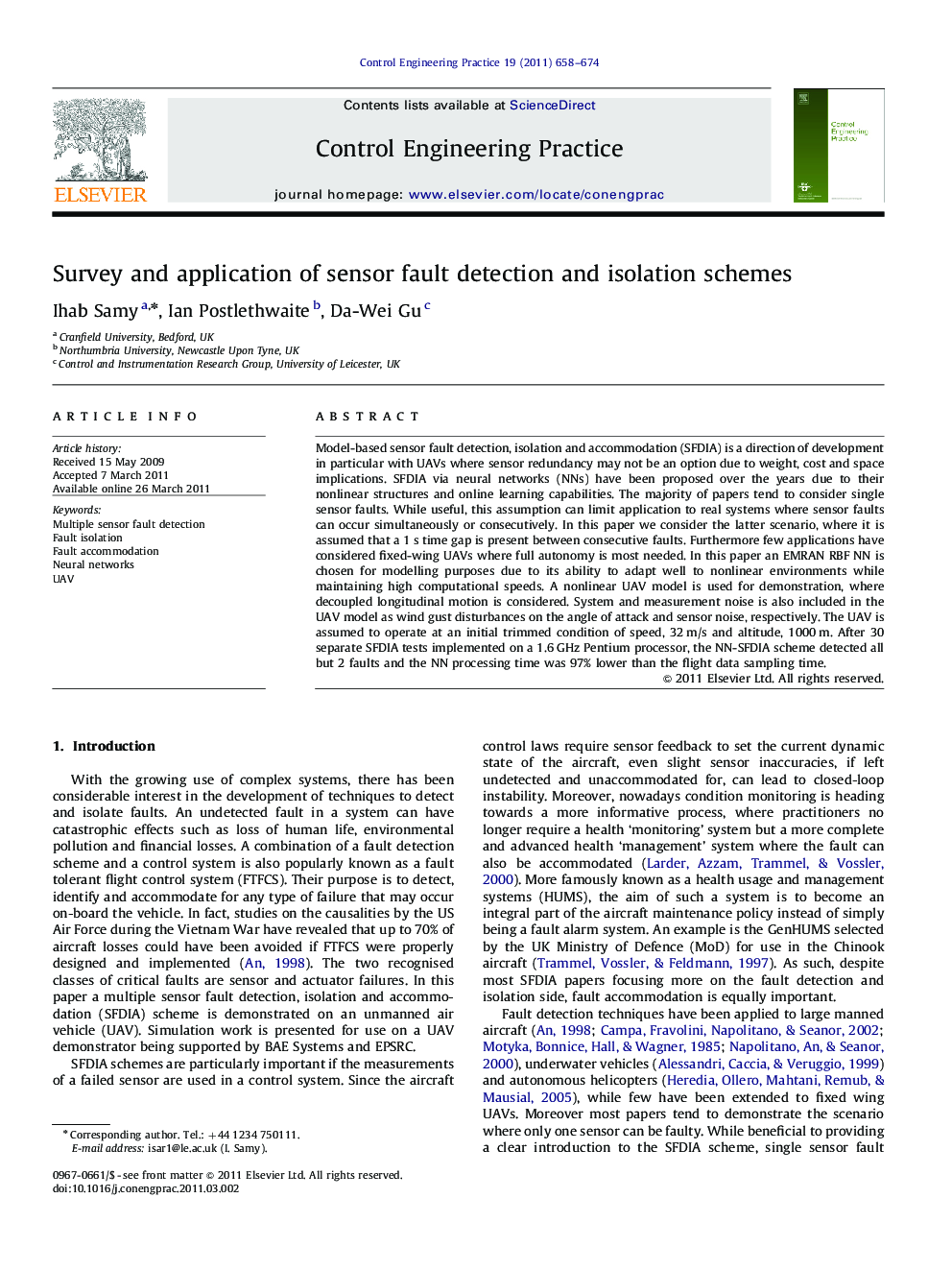| Article ID | Journal | Published Year | Pages | File Type |
|---|---|---|---|---|
| 699812 | Control Engineering Practice | 2011 | 17 Pages |
Model-based sensor fault detection, isolation and accommodation (SFDIA) is a direction of development in particular with UAVs where sensor redundancy may not be an option due to weight, cost and space implications. SFDIA via neural networks (NNs) have been proposed over the years due to their nonlinear structures and online learning capabilities. The majority of papers tend to consider single sensor faults. While useful, this assumption can limit application to real systems where sensor faults can occur simultaneously or consecutively. In this paper we consider the latter scenario, where it is assumed that a 1 s time gap is present between consecutive faults. Furthermore few applications have considered fixed-wing UAVs where full autonomy is most needed. In this paper an EMRAN RBF NN is chosen for modelling purposes due to its ability to adapt well to nonlinear environments while maintaining high computational speeds. A nonlinear UAV model is used for demonstration, where decoupled longitudinal motion is considered. System and measurement noise is also included in the UAV model as wind gust disturbances on the angle of attack and sensor noise, respectively. The UAV is assumed to operate at an initial trimmed condition of speed, 32 m/s and altitude, 1000 m. After 30 separate SFDIA tests implemented on a 1.6 GHz Pentium processor, the NN-SFDIA scheme detected all but 2 faults and the NN processing time was 97% lower than the flight data sampling time.
